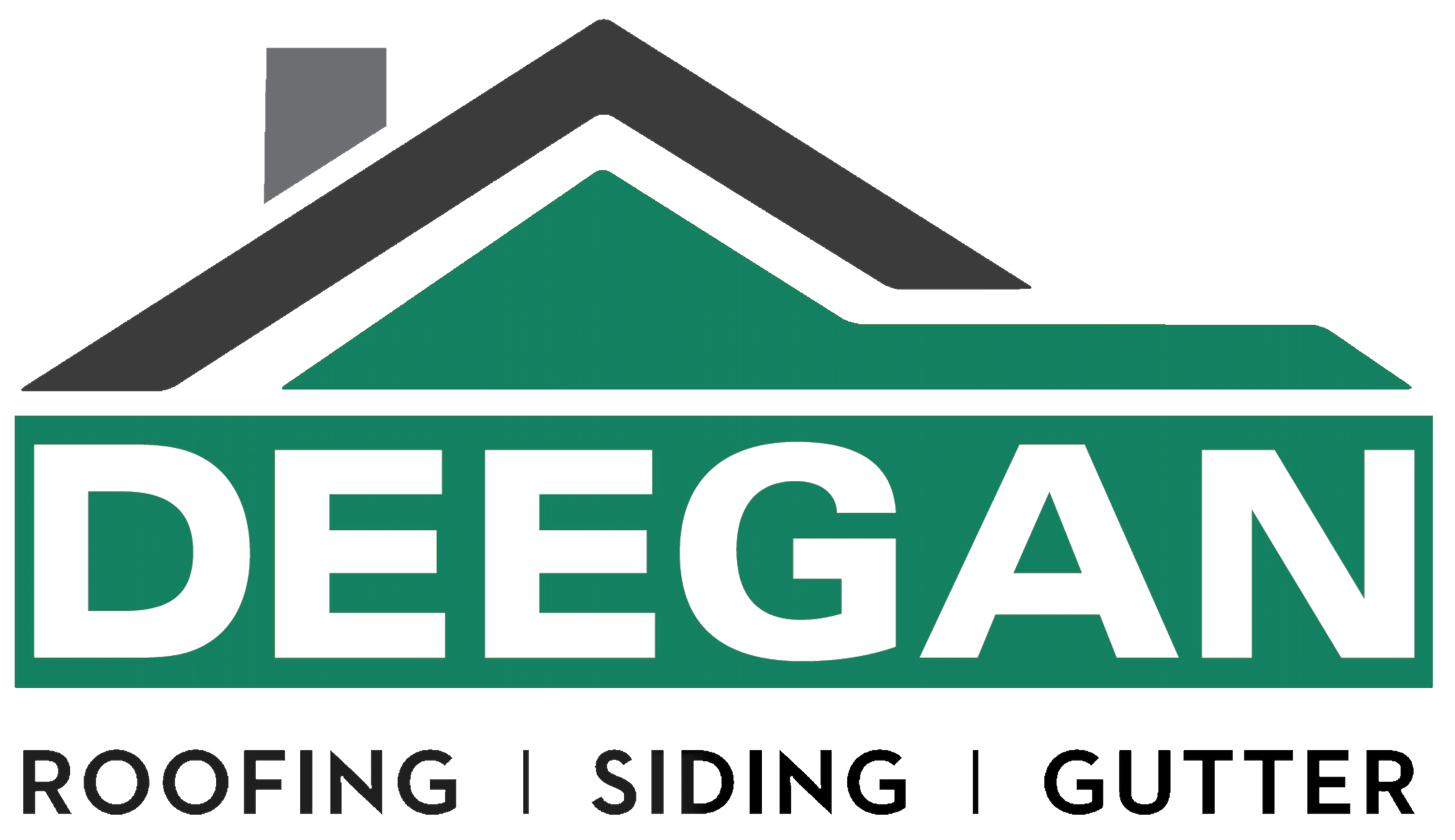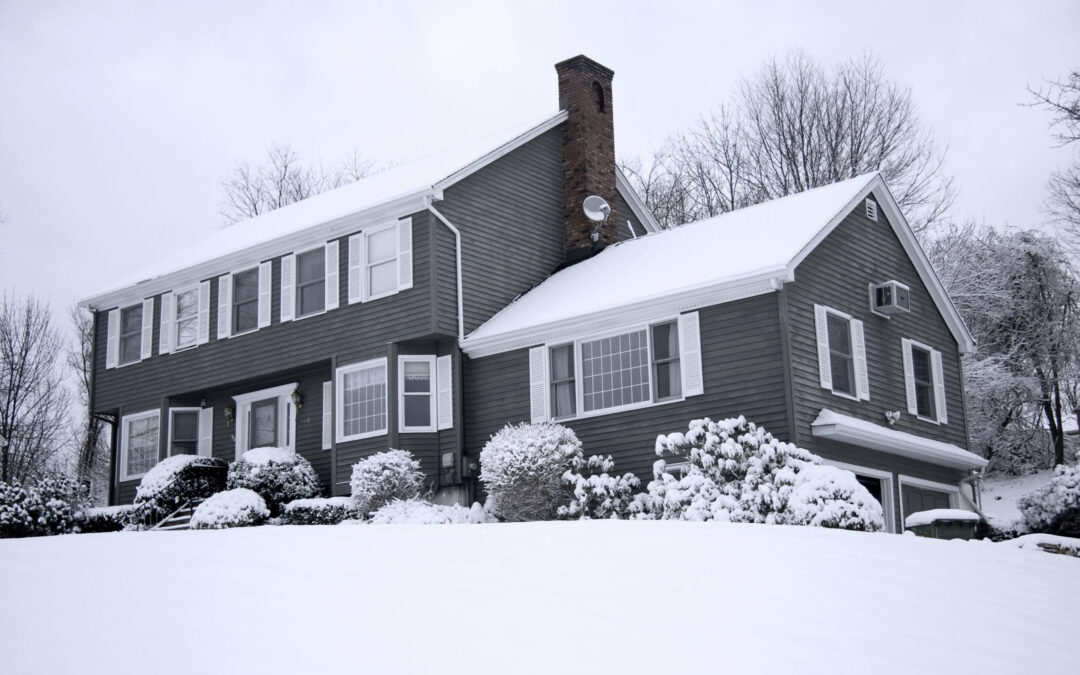Winter weather can be rough on your home, and your roof is no exception. Roofing issues caused by snow or ice are no joke because they can pose a danger to your safety and your bank account if they aren’t dealt with quickly. As soon as the temperature drops and the forecast predicts inclement weather, keep an eye out for the following winter roofing problems and use this guide to learn how to address them.
Ice Dams
Ice dams form when the temperature of your roof is colder on the eaves than on the main surface. As the warm air from your home rises and the heat from the sun hits the roof, the snow or ice sitting on your roof will melt, causing water to flow downward. When that water reaches the eaves with no access to warm air, it can refreeze, causing ice dams.
If ice dams are left intact, they can spread, causing ice and melted water to work their way under your shingles. This process can lead to damaging roof leaks, mildew, mold, and rot. To remove ice dams safely, fill long socks, tights, or pantyhose with calcium chloride deicer and place them along the edge of the roof. Calcium chloride lowers the freezing point of water and will help ice dams melt quickly. Rock salt deicers will damage your shingles, so stick with calcium chloride to be safe.
You can also use an ice dam removal tool to break ice dams into small chunks for removal. However, working on a snowy or icy roof can be dangerous, so it’s best to call a local ice dam removal professional to tackle this particular project.
To reduce the risk of ice dams, increase your attic’s ventilation and insulation. Adding soffit and ridge vents will increase airflow from the outside, helping to maintain a consistent roof temperature. You can also prevent ice dams by adding insulation, sealing cracks and flashing, and adding weather stripping to dormer windows and other openings like attic hatches.
Ice damming is why most building codes for homes in Northern climates require contractors to install an ice and water shield on the eaves of the roof. This self-adhesive mat goes under the shingles and protects your roof from ice dams by preventing water from running uphill into your roof.
Icicles
While icicles may look cool when they appear on your roof’s edges, they can be damaging to you and your home. Melted water can seep beneath your shingles, damaging your roofing materials or causing a leak. Icicles also put excess weight and stress on your gutters, which can cause them to buckle, crack, or even tear away from the house.
To remove icicles, you can use the deicing method mentioned above. You can also gently scrape icicles away with a wheeled rake but give yourself enough clearance so that they don’t fall on you. Another method for dealing with icicles is applying heat tape to your gutters, but you’ll have to apply it before the cold snap hits.
Condensation
Your attic temperature should be similar to the outdoor temperature as a rule of thumb. If your attic is too warm, cold air entering from the vents will mix with the warmer air and cause condensation and moisture buildup. This moisture can collect on trusses and ceiling joists and cause mold, mildew, and rot, resulting in potentially severe damage and expensive repairs.
To reduce the risk of condensation forming in your attic, add proper ventilation through the use of ridge and soffit vents. Increasing air circulation in your attic is the number one way to prevent condensation from forming on the underside of your roof and collecting in your attic. Plus, there are many online tools to help you calculate how much ventilation you need based on your attic space.
Strong Winds
Although we typically associate winter weather with snow and ice, strong winds are also common due to high-temperature gradients and cold fronts moving in from polar regions. While there’s nothing homeowners can do to prevent strong winter winds, it’s important to check your roof thoroughly after a severe weather event.
If you find areas where shingles have bent back or even removed entirely, call a professional roofing contractor for a roof inspection. The pro will look for signs of storm damage, report what needs replacing, and provide a price estimate.
Tree Limbs and Branches
High winds and severe weather can wreak havoc on the trees around your home. A buildup of snow and ice or strong winds can break overhanging limbs and branches, causing damage to your roof. If a large tree limb or branch falls on your house, the damage can range from a few dislodged shingles to a large hole in the roof.
Winter roofing Issues
If your roof sustains damage from fallen tree limbs, cover the damaged area with a tarp and secure it using nails. To repair this type of damage, you should hire a roofing professional rather than attempting a DIY fix. Even a small mistake made during a roof repair could lead to extensive damage and extensive repairs down the road. Before the winter weather rolls in, trim back any large overhanging limbs or branches or call a local tree service to remove any potentially hazardous trees nearby.
Contact us
Deegan Roofing can perform an inspection of your roof and repair any damage. We are family-owned and operated, Deegan Roofing Company has been installing and servicing residential and commercial roofing customers in the New Jersey area for over 30 years. Website https://www.deeganroofing.com/ Address: 345 Terrill Rd, Scotch Plains, NJ 07076 Hours: Open 8:30 AM ⋅ Closes 5:30 PM
Phone: (908) 322-6405

